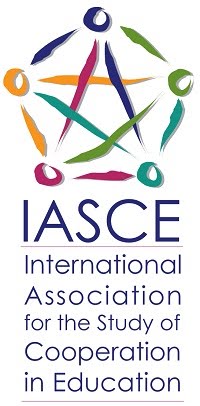The History of IASCE
Cooperative learning (CL) is much more than a single classroom practice. It encompasses theories, philosophies, and approaches to teaching and learning that facilitate small-group work and peer-mediated learning so that everyone can participate in and contribute to attaining a group's goal. The same theories and philosophies have also shaped democratic practices among all participants in a learning organization, including teachers and administrators. They have cultivated practices that support pro-social learning and conflict resolution throughout school settings—including playgrounds, parent-teacher relationships, and staff development.
When was the IASCE founded and why?
During the 1970s, the work of many pioneering educational researchers centered on what we know today as cooperative learning and led to the creation of the IASCE. In 1979, Shlomo Sharan, IASCE's first secretary and later its president, invited educational researchers from all over the world to present their work in Tel Aviv, Israel. Researchers and practitioners came from Australia, the Netherlands, and Canada, the Philippines, Mexico, England, the United States and Israel. They were committed to the democratization of schools and the schools’ evolution into learning communities that fostered better student learning, critical thinking, conflict resolution and student self-esteem. Through careful experimental research, these researchers were gathering momentum on the positive effects of cooperation in group work in order to credibly disseminate pedagogical practices that could transform classroom and school environments
What does "IASCE" mean?
From its inception, the IASCE set out to build on the work of the early pioneers in cooperative learning and their predecessors. IASCE sought to be an international body of educators with the common interest of studying cooperation in education. The word “study”
in the name of the Association— meaning the pursuit of knowledge by attentive scrutiny, observation, reading, trial and error, or research—was deliberately chosen to include a broader array of knowledge-production activities than the word “research” alone might connote. Of course, the founders of the IASCE wanted to include both quantitative and qualitative research but, more than that, they
sought to include professional reflection, case studies, attentive observation, teacher exchange, and action research.
The participants in the first conference made several careful distinctions that have contributed to the lexicon of the field. The first was to use and refine the term "cooperative learning," which, until then, had been used synonymously and interchangeably
with "cooperative planning," "group process," "group work," and "small-group teaching."
The second distinction was the deliberate choice of the word “education” in the name of the Association, to include all system levels involved in the process of education. Thus, along with the varieties of classroom-based, cooperative-learning models and strategies that might be studied, they wanted to include the examination of more macro-system levels such as organization development of school faculties, cooperative, school-based community relations, the cooperative educational community, and the cooperative school board. Indeed, Richard Schmuck, the first president of IASCE, opened the 1979 conference with a keynote address focused both on ways to use organizational development strategies to engage students in school-wide governance and on ways students might work cooperatively with
teachers and administrators to establish cooperative cultures.
The Tel Aviv meeting was the first of IASCE's international conferences, and saw the inauguration of the Association's newsletter that has, since that time, consistently gathered and broadcast information about the latest research in, and practice of, cooperative learning.
How did IASCE evolve in the 1980s and 90s?
The 1980s were a period of rapid growth for the IASCE. Among the active participants in IASCE conferences in the 1980s and 90s were Richard Schmuck, Robert Slavin, Nancy Madden, Spencer Kagan, Neil Davidson, Shlomo Sharan, Elizabeth Cohen, David Johnson, Roger
Johnson, Noreen Webb, Mark Brubacher, Lynda Baloche, Mara Sapon-Shevin, Liana Forest, Ted Graves, Celeste Brody, Yael Sharan, George Jacobs, Kathryn Markovchik, Angela O'Donnell, and many others. When the effects of their work took root, several researchers and practitioners such as David Johnson and Roger Johnson, Spencer Kagan, and Robert Slavin, created their
own prolific organizations.
A parallel development at this time was the creation of regional chapters of the IASCE in the United States and Canada, where various groups of educational leaders encouraged and strengthened the application of research findings to local needs. The first one was founded in California—the California Association for Cooperation in Education (CACIE), followed by the Great Lakes Association for Cooperation in Education (GLACIE), and the Mid-Atlantic Association for Cooperation in Education (MAACIE). At one time, Utah, Ohio, Maine, and Vancouvar also had regional chapters. The network of educators who contributed to the growth of the field broadened as other organizations that focused on cooperative learning were established in the US and other countries.
Since 1980, the focus of the research and practice of cooperative learning has evolved. Research continues and has honed the understanding of the effectiveness of specific methods, the application of methods to various content, and the cultivation of specific kinds of processes and academic performance. Research has also focused on staff development, school organization, and the role of cooperative learning in teacher education. IASCE members have been in the forefront of understanding cooperative learning in many contexts and dimensions.
What has the IASCE Newsletter contributed?
Over the years, the IASCE newsletter has tracked research on:
- effects of cooperative learning strategies and methods on achievement, social interaction, and cognitive processes in various content areas and at various grade levels;
- effects of school organization in the implementation of cooperative learning;
- similarities and differences among methods—with attempts at a general taxonomy;
- students’ and teachers’ perceptions of cooperative learning;
- effects of cooperative strategies and methods on inclusion; and
- effects of group composition, size, task structure, discussion, and helping behaviors on learning.
From the topics that concerned practitioners and researchers, several essential elements of cooperative learning took shape, elements that cut across methods, content areas and grade levels. Elements include:
- teambuilding and class climate building;
- setting the stage for cooperative group work;
- structured discussion and interaction;
- attention to group processes through reflective activities;
- the task structure and its relationship to positive interdependence;
- status treatments for achieving equity among students; and
- balance between individual and group accountability and assessment.
What have been the shifts in focus of IASCE?
As other professional organizations took an interest in training, development and research in cooperative learning and cooperation in education, the IASCE refocused its mission to support regional and local efforts for research and practice.
Between 1990 and 1996, the IASCE worked with several regional affiliates to co-sponsor four large conferences in North America. University-based researchers continued to expand the research base for cooperation in such areas as conflict resolution, teacher
education, staff development, and special education. By the mid 1990s, the IASCE recognized that, although cooperative learning was a regular topic in professional association publications and was widely acknowledged as best educational practice, it had yet to penetrate deeply into institutional and organizational life. With this in mind, the Association discontinued publication of its magazine, expanded its newsletter so that it would become a reliable source of information about research, publications, and conferences related to cooperative learning, and focused on projects that brought its expertise to improving teacher education and staff development by working with major research associations and supporting work on several book-length publications.
The IASCE has sponsored books that mark progress in the field, such as Professional Development for Cooperative Learning: Issues and Approaches (1998) and Teaching Cooperative Learning: The Challenge for Teacher Education.
During this time, the IASCE also co-sponsored conferences in Australia, the Netherlands, Sweden, and Canada. At a conference held in Toronto in 1999, the Association made a strong commitment to increasing its international focus and outreach. In keeping with
this commitment, the Association lowered membership dues, to make membership more affordable and accessible in developing areas of the world, and expanded its use of electronic communications media to increase access to quality, not-for-profit information about cooperative learning. Today, the IASCE website includes links to past newsletters, papers from past conferences, and links to
upcoming conferences.
The Association also began to develop new, and diverse, conference venues. The 2008 collaboration with the International Association for Intercultural Education (IAIE) is one example of such a venue.
As regions and countries around the world commit to reform their educational systems, cooperative learning has spread to Asia and Eastern Europe, where growing associations of teachers, teacher educators and researchers develop and research CL. These educators have enriched the fabric of IASCE membership, as is evident in the diverse origins of our board of directors, who come from eight different countries on four continents. In 2004, the IASCE conference was held in Singapore and the JASCE affiliate (Japan) organized a conference with IASCE in 2008.
What is the focus of IASCE in the 21st century?
The IASCE Newsletter ushered in the new century with a review of research written by Shlomo Sharan that highlighted the main research interests up to that time. By 2000, research interests included:
- social and academic outcomes of student interaction;
- student preparation for cooperation;
- development of clear criteria for discussion and evaluation;
- student motivation;
- cooperative learning in various content areas;
- effects of verbal interaction;
- pre-service and in-service teacher development;
- teacher concerns, satisfaction, and efficacy; and
- the use of cooperation in special education and bilingual education.
These and other issues, such as CL in higher education and CL's role in today's increasingly complex social and cultural reality, continue to engage researchers and practitioners, whose work is made known through our newsletter and at our conferences. To identify and acknowledge prominent people who have contributed to the better understanding of CL in all its ramifications, we have initiated the granting of awards in two categories: the IASCE Achievement Awards and the IASCE Elizabeth Cohen Award for Outstanding
Thesis/Dissertation.
Wherever educators seek ways to enhance students' responsibility for their learning, and teachers seek to refine their ability to create an interactive and nurturing learning environment, they draw on the power of cooperation in education, and on the experience of IASCE members. IASCE members continue to publish books and articles that report on their diverse contributions to cooperative learning. Our conferences and newsletter continue to serve as a platform for the fertile exchange of ideas about theory, research, and practice in the field.
|

Home
|
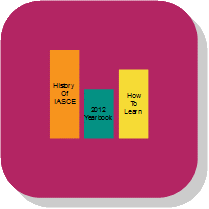
Resources
|
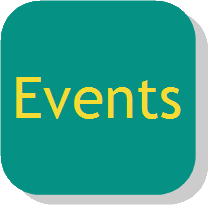
Conferences & Events
|
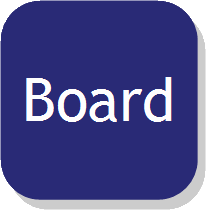
IASCE board
|
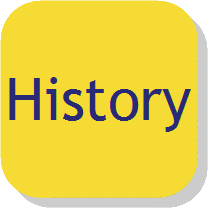
History of IASCE
|
|
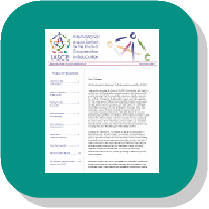
Newsletters
|

Working in Partnership
|
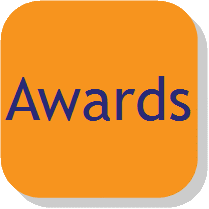
Awards
|

Contact us
|
